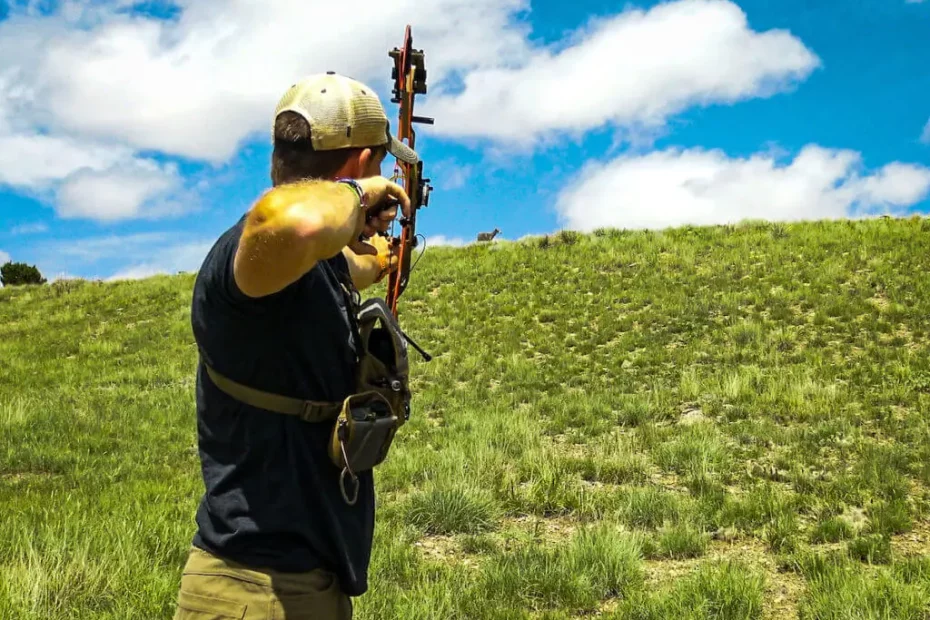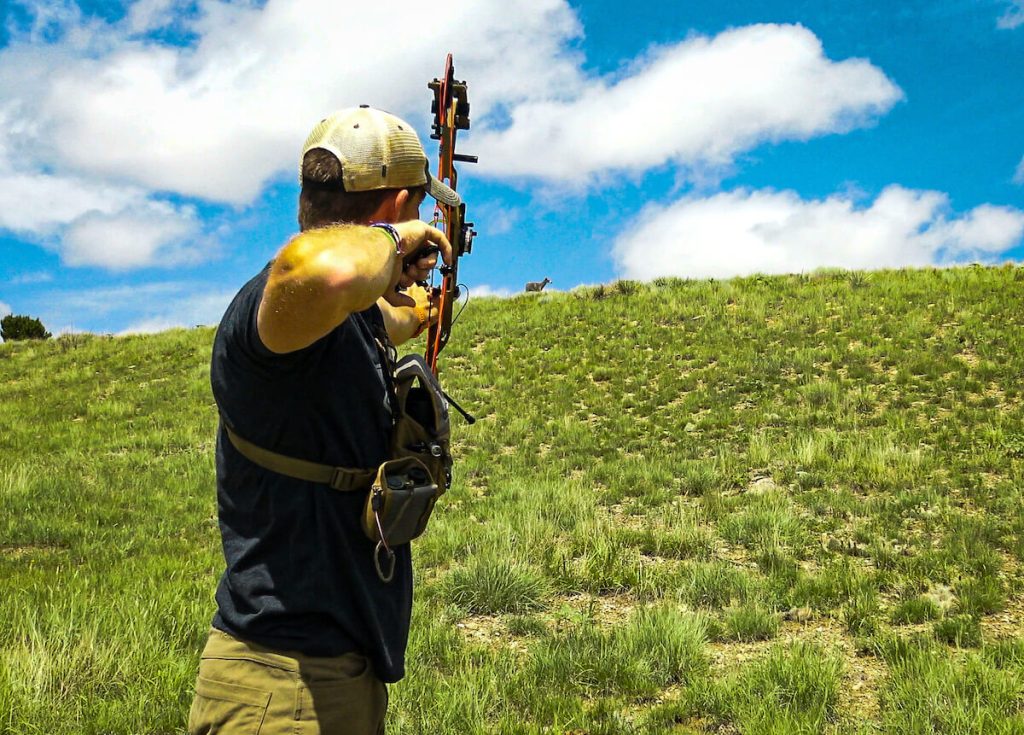
Estimated reading time: 7 minutes
Bowhunting is hard. Hit a big buck three inches left, right, up, or down from where you want, and you may never recover that animal. Hunt hard in the Rockies for seven days to finally earn an opportunity at a public land bull and bounce an arrow off his back. I have done both. Bowhunting will take you to the highest of highs and the lowest of lows.
The goal is perfection, but perfection in this game is unattainable. However, there is a way to ensure more grip-and-grins and fewer sob stories.
Table of contents – Archery Games
This summer, step outside established practice norms, break down new barriers and become more proficient with your stick-and-string than you ever thought possible with these three shooting games.
Game 1: Three In, None Out
I have penned a few “archery shooting game” articles in my day, and depending on the week, I always dub one my favorite. Right now, it’s Three In, None Out.
For this game, you need a sizeable foam or target like SEVR’s HD 21 or Block’s Infinity 22. I prefer a 3D target like those from Delta Mckenzie. Models like the Baby Daddy Mule Deer and Hoosier Daddy Buck work great.
If you go with the block-style target, I recommend spray painting one side of the target black and using silver duct tape to make a 6″ x 6″ square. If I go this route, I paint a small orange dot in the center of the square.

Start at 20 yards. The goal is to put three arrows into the vitals of your 3D target or the 6″ x 6″ square you created with the tape. You can move back to 30 yards if all three arrows are in. If one or more of the arrows is out, you must take a penalty and move up to 10 yards.
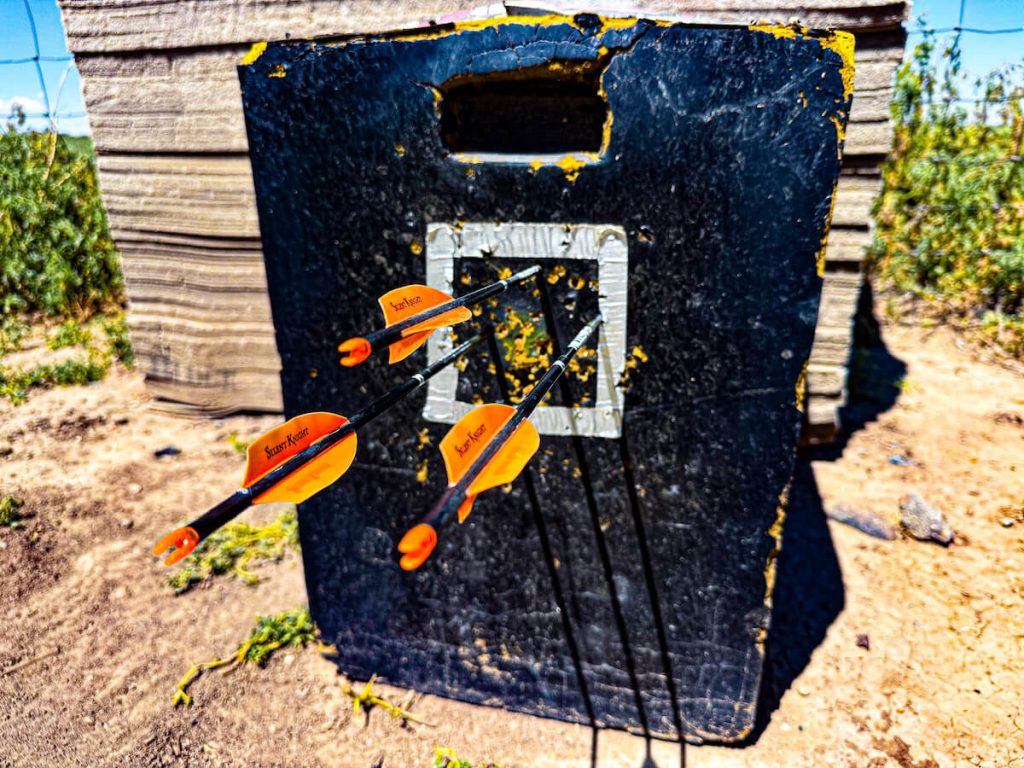
I play this game back to 80 or 90 yards. It’s a ton of fun, and it’s super important, to be honest with yourself and record your results in your shooting journal. I promise pressure starts to build when you’re playing this game solo or with a buddy, and you’ve got two in the vitals at 60 yards and need that third arrow to move back to 70 yards.
Playing with a buddy is great. Set a distance — I like 80 yards — and see who can get to 80 first and put three arrows in the vitals. This is a great game, and if you record your results, you can track your progress over time.
Game 2: 5-Spot From 20-50
Remember, these games are about stepping outside established shooting norms and breaking down barriers. This game will push you; like all of these games, you must track your results.
A 5-Spot Round is typically shot from 20 yards at five circular targets on a 17″ x 17″ paper sheet. The sheet is attached to large-range targets, and often, archers use lenses and specialized single-pin sights to punch Xs and shoot perfect scores.
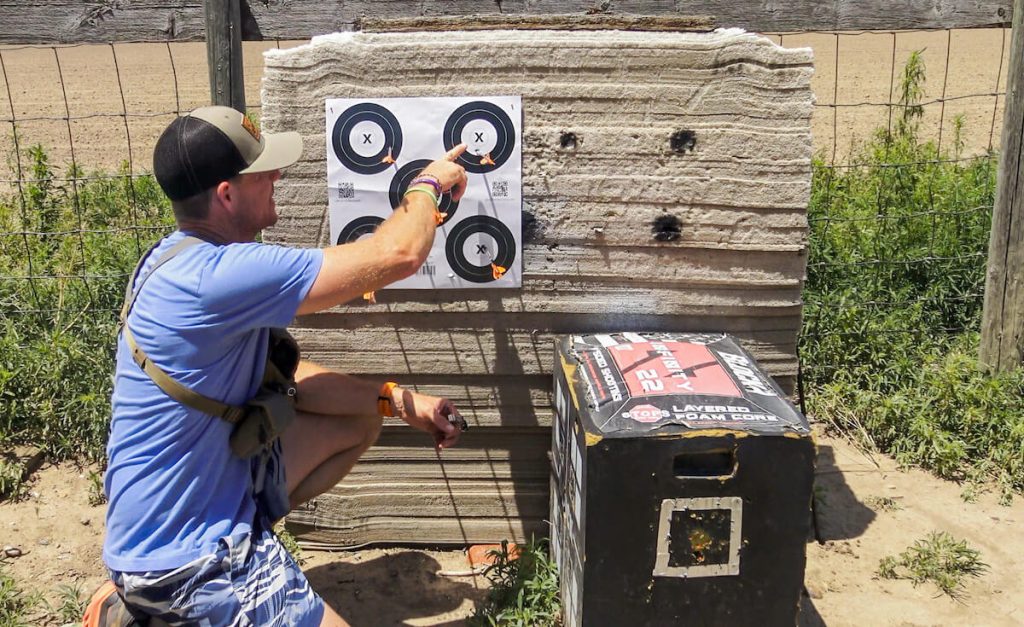
You will do the same, only no lenses allowed. It would be best if you used your standard hunting setup. 5-Spot paper targets are cheap. You can pick up a pack of 100 at your local Pro Shop or on Amazon. I use thumbtacks and attach my targets to my Block Range Target. This is a pricy target and is optional. I recommend a target surface face larger than 17″ x 17″. The Block and SEVR targets mentioned above will work fine.
Start by shooting five arrows at five rings from 20 yards. Then walk up and record your score and write it on the paper. That’s round 1.
Scoring works like this: The inner scoring ring is labeled with an X, and if any arrow shaft even cuts that line, the shot gets a score of 5X. If the shot hits the next white outer circle, the shot is a 5. The rest of the circle is made of two blue scoring rings, and an arrow placed in these rings is worth a score of 4.
A Perfect Score Is Possible
After recording your score, move back to 30 yards and repeat the process. Then, walk up and record your score. Do this for four rounds, which means you will shoot 20 arrows — five per round. You will shoot from 20, 30, 40, and 50 yards. A perfect score is 100 with 20X. Do this with a standard hunting setup, and you need to stop reading this article and start shooting professionally.
What makes this game hard is the distance from the target, and you’ll quickly discover there is a big difference between shooting at singular spots not surrounded by any other dots, squares, etc., and shooting at a target with multiple aiming points.
Grab yourself one of my all-time favorite foam targets, Morrell’s High Roller, and tell me if you had greater success pounding the single dot side of this dice-style target or the five-spot side. Most often, you will have greater success putting an arrow in the singular dot because there are no other dots or aiming points. Having five separate aiming points on a 17″x17″ paper makes things a little cluttered, and you have to hit targets on the paper that are high, low, and middle.
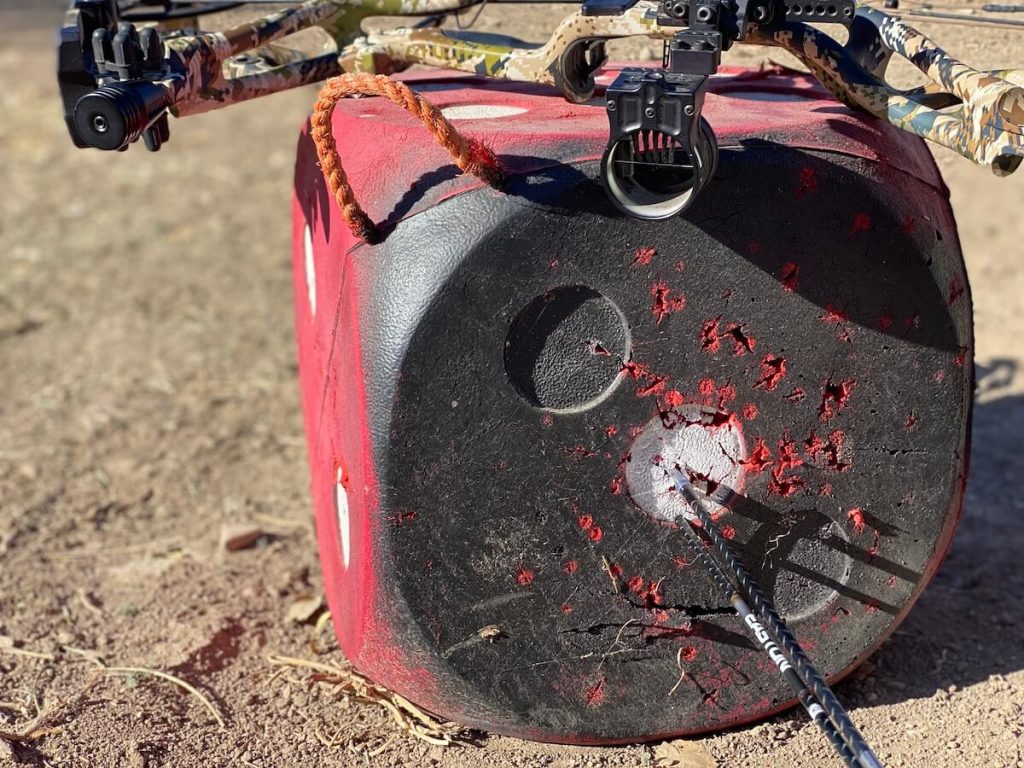
Game 3: Defined & Non-Defined
When shooting at foam, there are two types of aiming points — defined and non-defined. A defined aiming point is the white circles on Morrell’s High Roller or the hexagon-shaped red/black aiming points on its Yellow Jacket Supreme 3 Field Point Archery Target.
SEE MORE: 8 Gear Grabs Your Bowhunting Dad Will Love
These points give us a defined symbol to hit. Non-defined aiming points are those on 3-D targets. Yes, I understand that 3-D targets have scoring rings, but those rings match the color of the foam and are much less distinguishable. Non-defined aiming points are great because they are much like animals’ vitals. We must aim center lung, trust or pin float, and execute. Shooting at 3D targets creates realism.
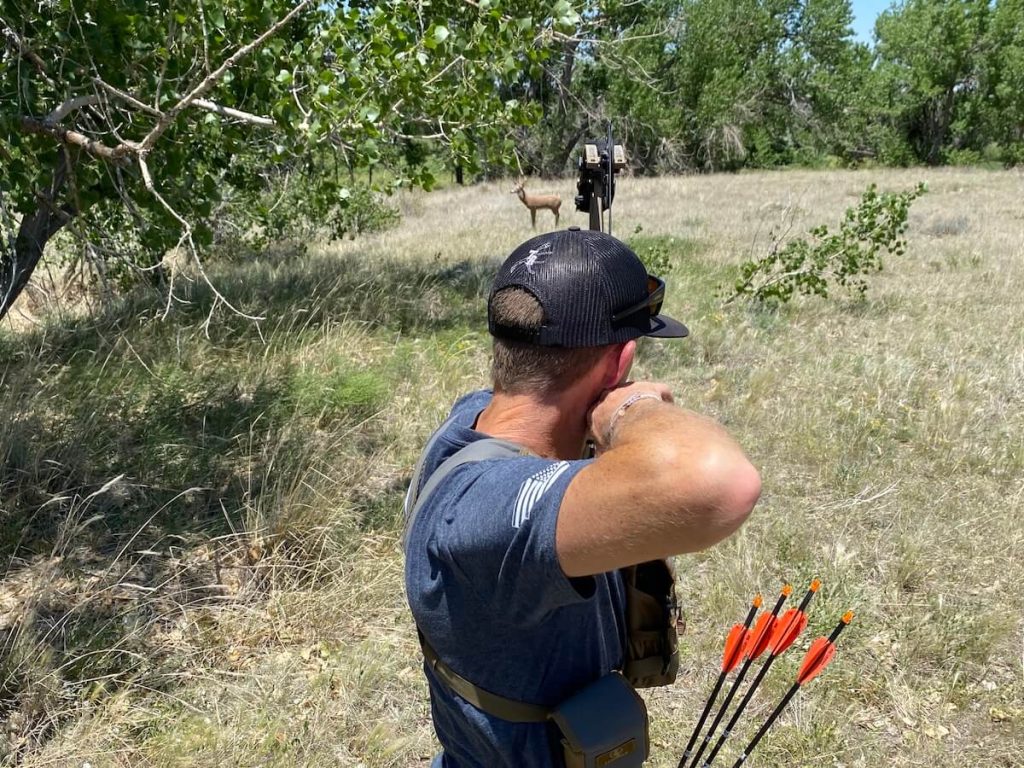
For this game, I use Morrell’s High Roller dice-style target. I shoot three arrows from 40 yards at the three-sided dice side. Any arrow in or touching the white is worth 10. Any arrow outside the white is worth 0. Next, I jump to a 3-D target at 20 yards. This is a non-defined aiming point, and as long as your shaft is in the vitals, you move from 20 yards to 30 yards and give yourself a score of 10. At 30 yards, you shoot another arrow. If it’s in the vitals of the 3D target, you get another score of 10 and move back to 40 yards. I play this game back to 80 yards. However, the first time you hit outside the vitals on your 3D target, you stop at that distance, and the game is over.
Archery Games Summary
Enjoy the process of testing yourself and breaking down shooting barriers. Also, I highly recommend getting creative and making up your own games. Have a great fall, and remember, fight for the center of the center, trust your pin float, and execute.
